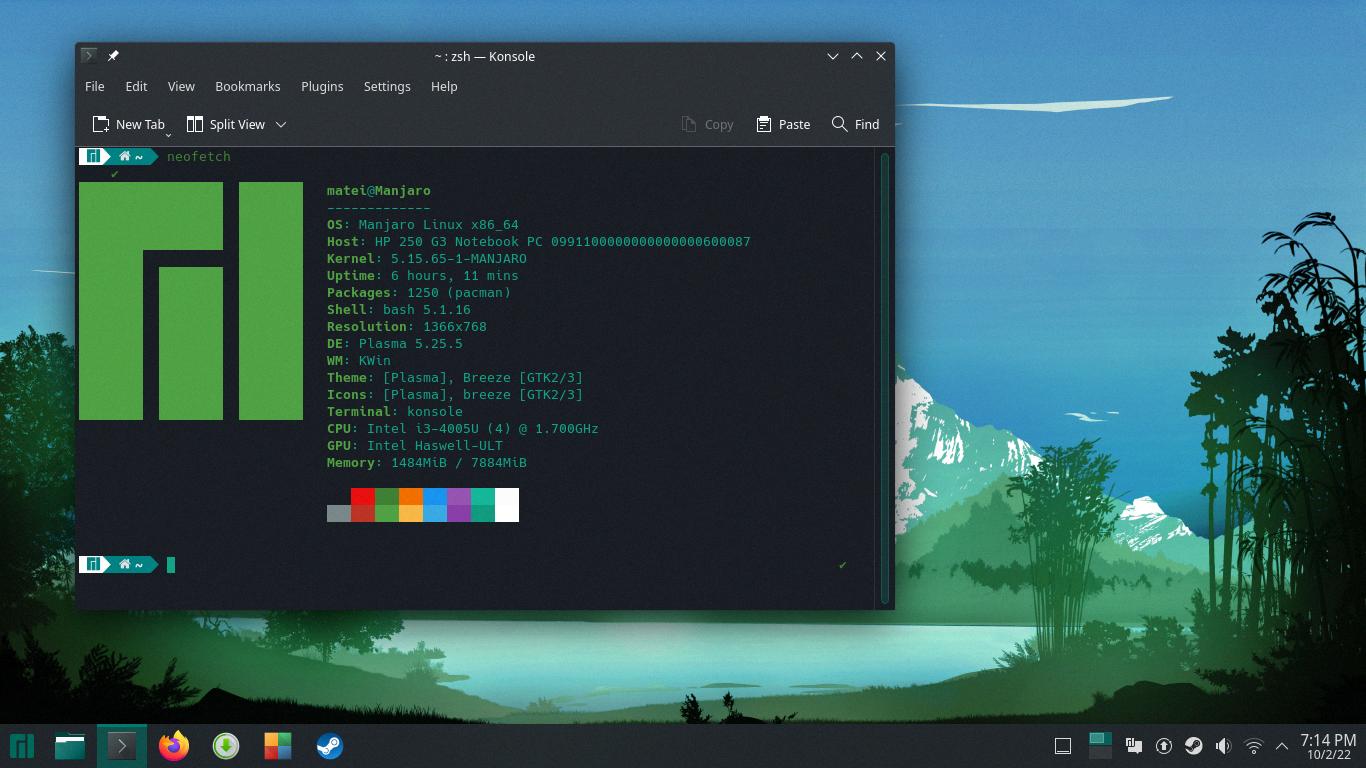Linux Mint and Manjaro are two popular Linux distributions that offer different features and experiences. In this article, we will compare Linux Mint and Manjaro in terms of their user interface, stability, package management, and community support.
User Interface:
Both Linux Mint and Manjaro provide user-friendly interfaces that are easy to navigate. Linux Mint uses the Cinnamon desktop environment, which resembles the traditional Windows desktop layout. It offers a familiar and comfortable experience for users transitioning from Windows. On the other hand, Manjaro offers multiple desktop environments to choose from, including Xfce, KDE, and GNOME. This gives users the flexibility to customize their desktop experience according to their preferences.
Stability:
When it comes to stability, Linux Mint is known for its reliability and predictability. It follows a fixed release cycle, which means that updates and upgrades are thoroughly tested before being released to users. This ensures a stable and bug-free experience. On the other hand, Manjaro is a rolling release distribution, which means that updates are released on a continuous basis. While this provides users with the latest software versions, it can also introduce occasional stability issues. Manjaro requires regular updates to ensure system stability.
Package Management:
Both Linux Mint and Manjaro have their own package managers. Linux Mint uses APT (Advanced Package Tool), which is a powerful and easy-to-use package management system. It allows users to install, update, and remove software packages with a few simple commands. Manjaro, on the other hand, uses its own package manager called Pamac. Pamac provides a user-friendly graphical interface for managing software packages. It also supports the Arch User Repository (AUR), which allows users to easily access a wide range of community-maintained packages.
Community Support:
Both Linux Mint and Manjaro have active and supportive communities. Linux Mint has a large user base and a dedicated community forum where users can ask questions, seek help, and share their experiences. Manjaro also has a strong community presence, with an active forum and a helpful community of users and developers. Additionally, Manjaro has its own software repositories, which are maintained by the community and provide a wide range of software packages.
Linux Mint and Manjaro are both excellent Linux distributions that offer different experiences. Linux Mint is known for its stability and user-friendly interface, while Manjaro provides the latest software updates and a customizable desktop environment. Ultimately, the choice between Linux Mint and Manjaro depends on your personal preferences and needs.
Should I Use Manjaro Or Linux Mint?
When it comes to choosing between Manjaro and Linux Mint, it ultimately depends on your personal preferences and requirements. Both distributions have their strengths and weaknesses, so let’s delve into the details to help you make an informed decision:
Reasons to choose Manjaro:
1. Rolling release model: Manjaro follows a rolling release model, which means you have access to the latest software updates and features as soon as they become available. This can be advantageous if you want to stay on the cutting edge of technology.
2. User-friendly experience: Manjaro aims to provide a user-friendly experience by offering a simple installation process and a polished desktop environment. It also includes helpful tools like the Manjaro Settings Manager to easily configure your system.
3. Access to the Arch Linux ecosystem: Manjaro is based on Arch Linux and benefits from its vast and up-to-date software repositories. This allows you to access a wide range of packages and software not available in other distributions.
Reasons to choose Linux Mint:
1. Stability and predictability: Linux Mint is known for its stability, making it a reliable choice for users who prioritize a smooth and consistent experience. It focuses on providing a familiar desktop environment with a traditional layout, making it easy for new users to adapt.
2. Large user community: Linux Mint has a large and active user community, which means you can easily find support, tutorials, and solutions to common issues. This can be valuable if you prefer having a robust support system.
3. Extensive software availability: While Manjaro benefits from Arch Linux’s repositories, Linux Mint is based on Ubuntu and thus has access to the vast Ubuntu software ecosystem. This ensures a wide range of software options and compatibility with various applications.
If you value staying up to date with the latest software and prefer a user-friendly experience, Manjaro might be a good choice for you. On the other hand, if stability, predictability, and a large user community are more important to you, Linux Mint could be the better option. Consider your priorities, requirements, and personal preferences to make the best decision for your needs.

What Are The Disadvantages Of Manjaro Linux?
– Less stability compared to Arch Linux: Manjaro is a rolling release distribution, which means that it constantly receives updates and new versions. While this can provide access to the latest features and improvements, it also introduces a higher risk of instability. Users may need to perform upgrades frequently to ensure their system remains stable.
– Challenging to change default theme: Manjaro’s default theme may not be preferred by all users, and changing it can be a bit more complicated compared to other Linux distributions. While it is possible to modify the default dark theme, it may require some technical knowledge and effort.
– Potential compatibility issues: As Manjaro is based on Arch Linux, there may be compatibility issues with certain software or hardware configurations. While the Manjaro team tries to address these issues, it’s important to be aware that not all software or hardware may work seamlessly on Manjaro.
– Limited software availability: Although Manjaro provides a wide range of software through its repositories, it may not have the same extensive software availability as some other popular Linux distributions like Ubuntu or Fedora. This can be a disadvantage for users who rely on specific software that may not be available in the Manjaro repositories.
– Community support: While Manjaro has a growing and active community, it may not be as large or well-established as some other Linux distributions. This could potentially result in less readily available support and documentation for troubleshooting issues or finding solutions to specific problems.
– Learning curve: Manjaro, being a rolling release distribution, may require a certain level of knowledge and experience with Linux systems. It may not be as beginner-friendly or user-friendly as some other Linux distributions that have more simplified installation processes and user interfaces. Users new to Linux may need to invest more time in learning and understanding the system.
Which OS Is Better Than Linux Mint?
When it comes to determining which operating system is better than Linux Mint, it ultimately depends on individual preferences and specific needs. However, there are several popular alternatives that are often considered by users. Here are some of the top contenders:
1. Windows 11: Microsoft’s latest operating system offers a modern and visually appealing interface with improved performance and gaming capabilities. It also provides seamless integration with Microsoft services and a vast array of software options.
2. Ubuntu: This Linux-based operating system is known for its user-friendly interface and extensive community support. It offers a stable and secure environment, making it a popular choice among both beginners and advanced users.
3. Windows 7: Although it is an older version of Windows, many users still prefer Windows 7 due to its simplicity and compatibility with a wide range of software and hardware. However, it is worth noting that Microsoft has discontinued support for this operating system.
4. Red Hat Enterprise Linux: This is a popular choice for enterprises and professionals due to its robust security features and reliability. It offers extensive support and is often used in server environments.
5. macOS: Developed by Apple, macOS provides a sleek and intuitive user interface. It is known for its seamless integration with Apple devices and offers a wide range of creative and productivity software.
These are just a few examples of operating systems that are often considered as alternatives to Linux Mint. It is important to evaluate your specific requirements, such as user interface preferences, software compatibility, security features, and community support, before making a decision.
Is Manjaro Linux User-friendly?
Manjaro Linux is known for its user-friendly approach. Here are some reasons why:
1. Familiarity: For those who have been using Windows for an extended period, Manjaro provides a familiar interface and user experience. The desktop environment and layout resemble that of Windows, making it easier for users to transition.
2. Ease of installation: Manjaro Linux offers a straightforward installation process with a user-friendly graphical installer. It allows users to easily set up the operating system without requiring extensive technical knowledge.
3. Software availability: Manjaro comes with a vast range of pre-installed software, including popular applications like LibreOffice, Firefox, and VLC media player. Additionally, its software repositories provide easy access to a wide variety of applications, making it convenient to install and update software.
4. Stability and reliability: Manjaro is based on Arch Linux but adds an extra layer of stability through its testing process. It ensures that updates and upgrades are thoroughly tested before being released to users, reducing the chances of system instability and crashes.
5. User-friendly package management: Manjaro utilizes the Pacman package manager, which is known for its simplicity and efficiency. It allows users to easily install, update, and remove software packages using simple commands or graphical interfaces.
6. Community support: Manjaro has a large and active community of users who are willing to help and provide support. Online forums, documentation, and tutorials make it easy for users to find solutions to common issues or seek assistance from experienced users.
7. Rolling release model: Manjaro follows a rolling release model, which means that users continuously receive updates and upgrades without the need for major version upgrades or reinstallation. This ensures that users always have access to the latest software versions and security patches.
Manjaro Linux is highly regarded for its user-friendly nature, making it an excellent choice for both beginners and experienced users looking for a stable and reliable operating system.
Conclusion
When comparing Linux Mint and Manjaro, it’s important to consider factors such as stability, user interface, and security.
Linux Mint is known for its stability and predictability. It is a great choice for users who prioritize a reliable and consistent operating system. With its focus on providing a familiar and user-friendly experience, Linux Mint is a popular option for those transitioning from Windows.
On the other hand, Manjaro offers a rolling release model, which means frequent updates and upgrades are required. While this can provide access to the latest software and features, it may also introduce potential instability. However, Manjaro’s customizability and its own repositories, package manager, themes, and software make it an attractive choice for more advanced users who enjoy tinkering with their system.
Both Linux Mint and Manjaro have their strengths and weaknesses, and the choice between them ultimately depends on individual preferences and requirements. Linux Mint offers stability and familiarity, while Manjaro provides flexibility and the latest software. It’s important to weigh these factors and consider which distribution aligns best with your needs and level of expertise.








